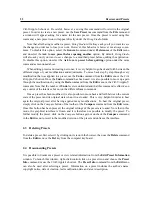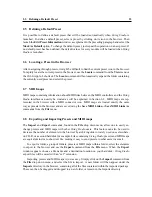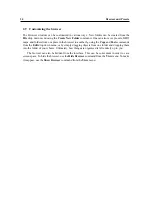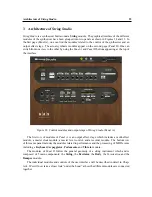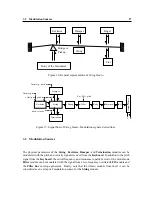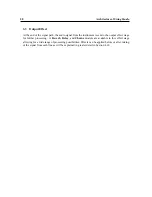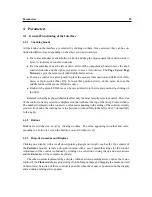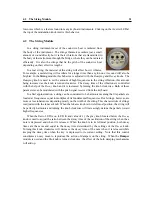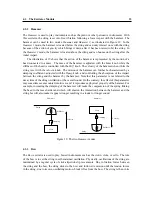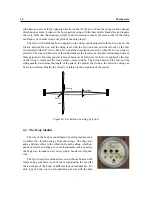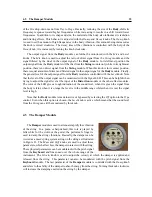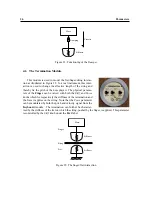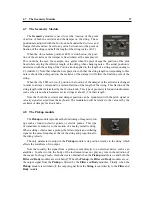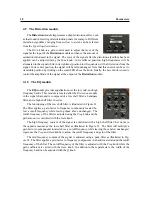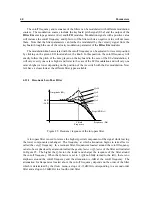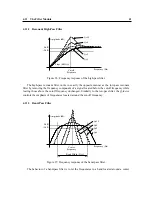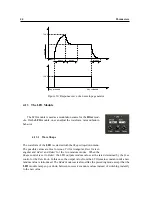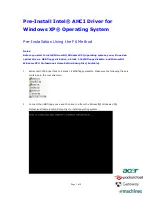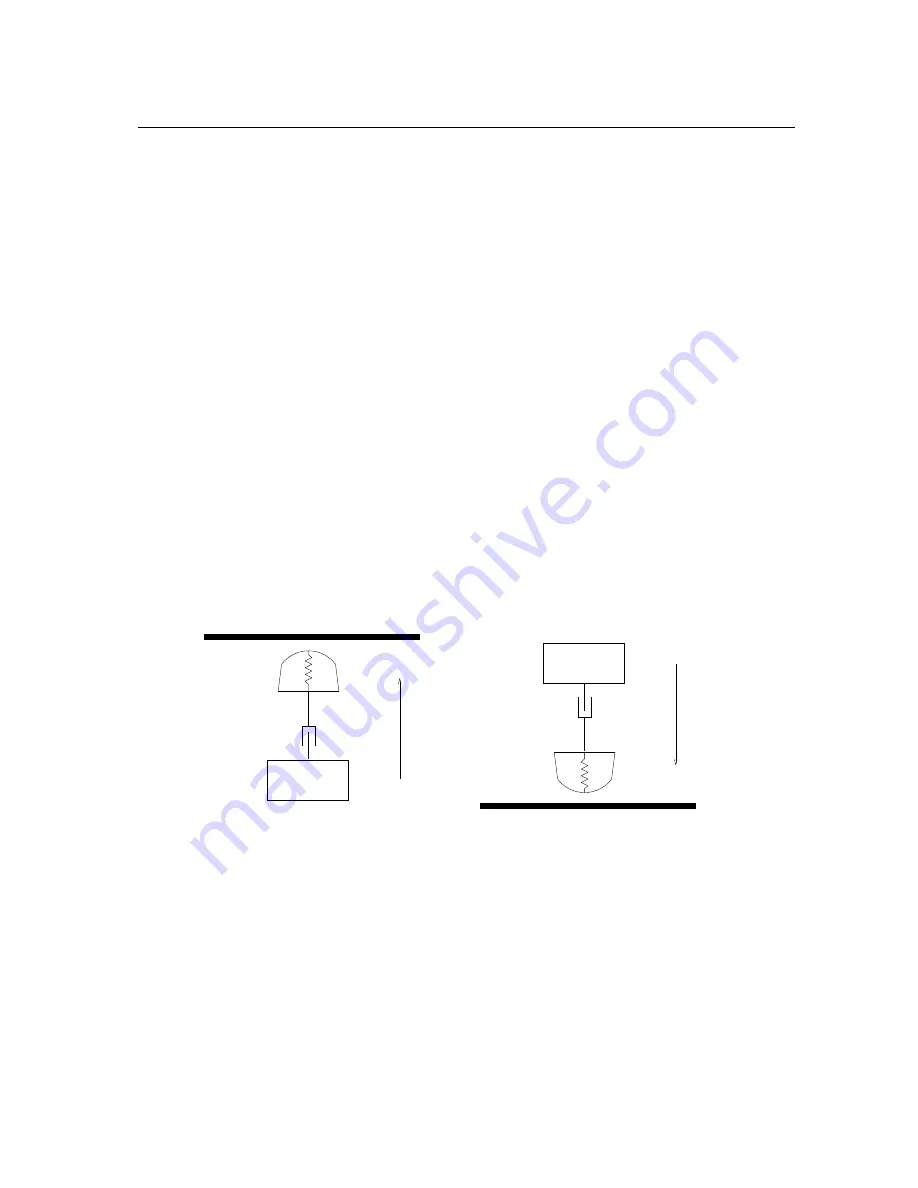
4.3
The Excitator Module
33
4.3.2
Hammer
The Hammer is used to play instruments such as the piano or other percussive instruments. With
this excitator, the string is set into free vibration following a force impact with the hammer. The
hammer can be used in two modes, Hammer and Hammer 2, as illustrated in Figure 19. In the
Hammer 1 mode, the hammer is located below the string and can only interact once with the string
because of the action of gravity which brings it down after it has been raised to hit the string. In
the Hammer 2 mode, the hammer is located above the string and can bounce on the string after the
initial impact.
The illustration of 19 shows that the action of the hammer is represented by the motion of a
head connected to a mass. The mass of the hammer is adjusted with the Mass knob while the
stiffness of the head is controlled with the Stiff knob. The velocity of the hammer when it hits the
string is set with the velocity knob. The motion of the hammer can further be characterized by a
damping coefficient, adjusted with the Damp knob, and controlling the absorption of the impact
between the string and the hammer by the hammer. Note that this parameter is not related to the
decay time of the string oscillation or the overall sound. On the contrary, the effect of this parameter
may sometimes seem counter-intuitive even if it reproduces a physical property of the hammer. For
example, increasing the damping of the hammer will make the compression of the spring linking
the head to the mass harder and which will shorten the interaction between the hammer and the
string but will also make it appear stronger resulting in a louder or longer sound.
Damping
Mass
Stiffness
String
Velocity
Damping
Velocity
Mass
Stiffness
String
Hammer 1
Hammer
2
Figure 19: The two Hammer modes
4.3.3
Bow
The Bow excitator is used to play bowed instruments such as the violin, viola, or cello. The role
of the bow is to set the string in self-sustained oscillation. Physically, oscillations of the string are
maintained by a regular cycle of stick-slip-stick-slip movements. Due to friction forces between
the string and the bow, the string sticks to the bow and follows its motion until the tension forces
in the string, due to its own oscillating motion, break it free from the bow. The string is then in its
Summary of Contents for STRINGSTUDIO
Page 1: ...USER MANUAL ...




